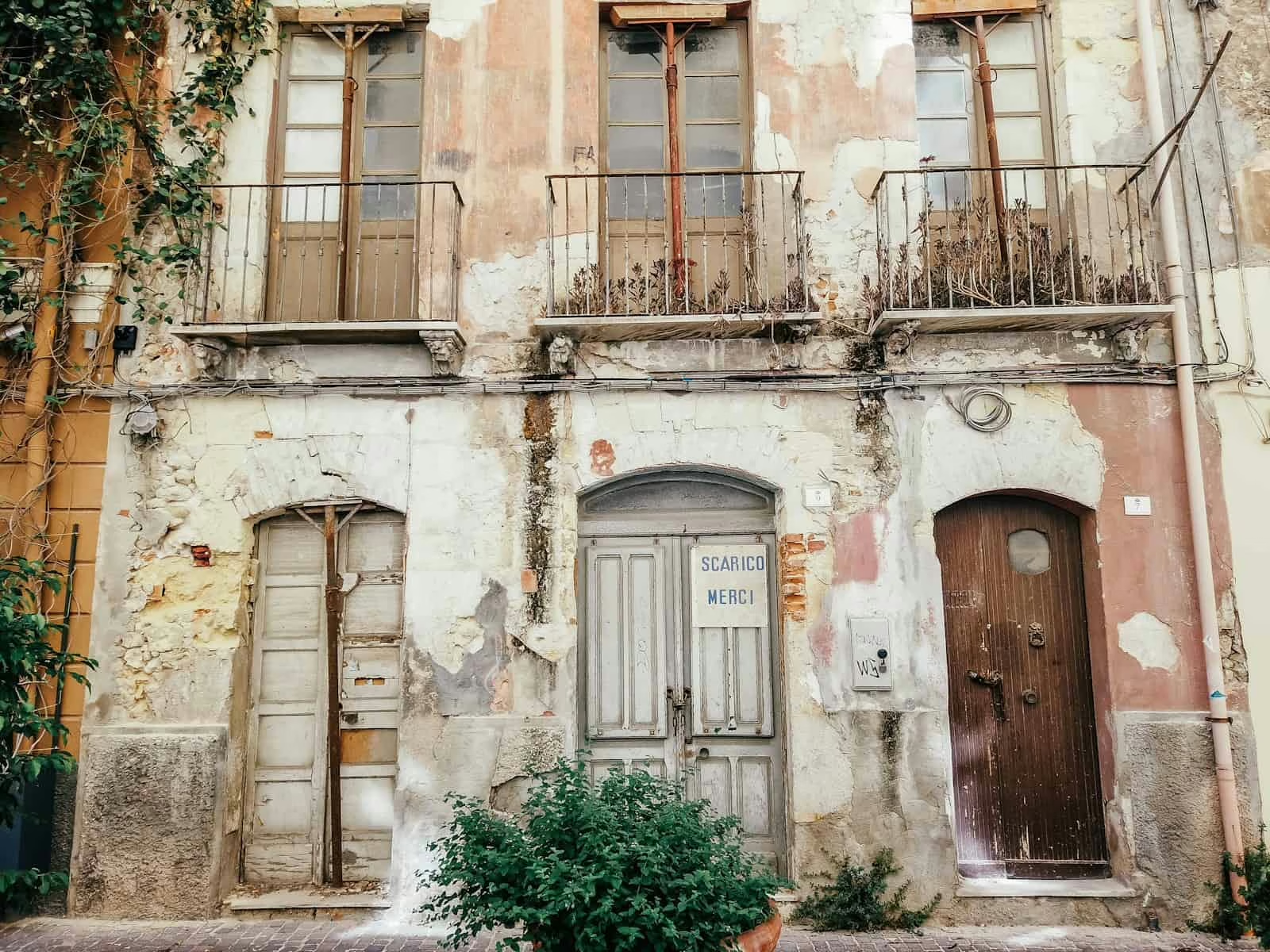The idea of owning a home in an idyllic Italian village for the price of an espresso is perhaps the most successful real estate marketing story of the last decade. The “Case a 1 euro” scheme went global, originating a trend that inspired similar programs from Spain to Croatia. But today, in 2025, that original scheme is just the tip of the iceberg. For the serious investor seeking knowledge, the conversation has evolved. While property in Italy for 1 euro still exists, it’s being overshadowed by more pragmatic, secure, and financially attractive alternatives offered by Italian municipalities—from discounted, ready-to-live-in homes to direct relocation subsidies and grants.
Content
The Origin of the Myth: Why is Italy Giving Away Houses?
To understand the scheme, you must understand the problem. Italy, much like Spain, suffers from the massive depopulation of its borghi abbandonati (abandoned villages). For decades, younger generations have left rural areas for jobs in the industrial north and major cities, leaving empty homes behind. These properties, often in ruins, become a burden on the municipalities—they generate zero tax revenue and pose a public safety risk.
The “Case a 1 euro” initiative was a brilliant move. It is not a standard sale, but rather a public auction for commitment. The municipality acts as an intermediary, transferring abandoned properties (often donated by owners who can’t pay taxes) to new owners for the symbolic sum of €1 and a firm contract to renovate.
Deconstructing the Scheme: What Are You Actually Buying?
The €1 deal isn’t just a handshake. It’s the beginning of a complex process tied to strict legal obligations. Every town has its own rules, but the core steps are nearly universal:
- Selection and Application: You find a municipality with an active program (like Sambuca in Sicily or Bisaccia in Campania) and submit a formal application, which includes a detailed renovation plan (progetto di ristrutturazione).
- Making the Commitment: This is the heart of the deal. You legally pledge to start renovations within 1-2 years and complete them entirely within 3 to 5 years.
- Guarantee Deposit: To prove your seriousness, you pay a guarantee deposit (polizza fideiussoria) of between €3,000 and €5,000. This amount is refunded upon successful completion of the renovation on time. If you fail, you forfeit the deposit.
The True Cost: How Much Does a “€1 Property” Really Cost?
The symbolic euro is just the first drop in an ocean of expenses. As investment analysts, our job is to show you the real math.
- Administrative and Notary Fees: Expect to pay between €2,500 and €4,500 for the notary, legal fees, registration, and all the taxes and fees when buying property abroad.
- Guarantee Deposit: As mentioned, this is €3,000 to €5,000 of your capital locked away for several years.
- Renovation Costs: This is the great unknown. Most properties are in a “rudere” (ruin) state. They lack a roof, floors, plumbing, or electricity. A full structural restoration can easily cost between €50,000 and over €120,000. This budget, however, is just the starting point. The risk of cost overruns is immense. Finding reliable builders (costruttori) in a remote area is a challenge. Italian bureaucracy for permits (permessi) is notoriously slow, leading to significant delays. Every delay means more costs, especially if you are managing the project from abroad.
In-Depth Risk Analysis: Factors Beyond the Budget
Beyond the renovation cost overruns, a serious investor must analyze these risks:
- Project Management Risk: If you are not on-site, hiring a local project manager (typically a geometra or architect) is essential. You must budget this as an additional ~8-15% of your renovation budget. Attempting to manage it yourself from abroad is a near-certain recipe for failure.
- Subsidy and Grant Risks: The newer, more attractive schemes (relocation subsidies, business grants) are dependent on municipal or state budgets. These funds are not infinite, and programs can be paused, reduced, or cancelled by the municipality/state with little notice.
- Scenario 1: Grants are canceled. The municipality’s budget runs out, and the program is paused right before you apply.
- Scenario 2: Regulations tighten. The rules to qualify for the subsidy change, requiring more paperwork or tighter deadlines, making the funding harder to access.
Beyond €1: The New Models for Italy’s Revitalisation in 2025
The most interesting part for investors today isn’t the original scheme, but its evolution. Municipalities realized that attracting people was more important than just fixing buildings. Here are the new, better opportunities:
- Discounted Homes: Towns like Carrega Ligure in Piedmont and Pratola Peligna in Abruzzo have adopted a different model. They sell properties that are in better condition (some even habitable) for prices ranging from €5,000 to €30,000. This is a much safer and more predictable investment model with clear costs.
- “Active Residency” Subsidies and Grants: This is the latest and most attractive trend. Some municipalities will literally pay you to move there.
- Presicce-Acquarica (Puglia): Offers a subsidy of up to €30,000 to new residents (individuals or families) who register, buy, and renovate a home.
- Caltri (Campania): Offers a subsidy of up to €27,000 to families under 41 who start a small business.
- Santo Stefano di Sessanio (Abruzzo): Offers grants (non-repayable funds) up to €20,000 to start a business, along with a symbolic rent for a place to live.
These programs target people who will actually live there, work remotely, or contribute to the local economy.
Key Takeaways: A Quick Checklist
For readers who want a brief overview, here are the core facts:
- The Myth: You buy a house for €1.
- The Reality: You buy the right to renovate a ruin. The real cost (with renovations and fees) is closer to €60,000 – €120,000+.
- The Catch: You have strict renovation deadlines (3-5 years) and must pay a guarantee deposit of €3,000-€5,000, which you forfeit if you fail.
- The Better Alternative: Look for municipalities offering subsidies and grants for active residency (up to €30,000) or selling discounted homes (€5,000 – €30,000) that are in better condition.
Conclusion: A Lifestyle Project, Not a Quick Investment
The property in Italy for 1 euro scheme is not a scam, but it is not the free deal it appears to be. It is a serious, long-term project that requires significant capital, patience with Italian bureaucracy, and a true passion for restoration. For the classic investor looking for returns, the risks are high, and the liquidity of a property in a remote village is low. This falls among the more unique trends in property investments abroad.
The Buyer Profile: Is This Project Really for You?
Before you jump in, conduct an honest self-assessment. This opportunity is NOT for everyone. It is for you only if you meet the following criteria:
- You Have Capital: You have a minimum of €60,000 – €100,000+ in liquid capital that you can afford to lock into an illiquid asset. This is not “get rich quick” money.
- You Have Patience: Are you prepared to wait 1-2 years for permits and another 1-2 years for construction? The Italian la dolce vita also applies to the speed of bureaucracy.
- You Love Restoration: You must be an enthusiast who finds joy in the process of saving a historic building, not just someone looking for a cheap house.
- You Can Manage a Project: You have experience (or have hired a professional) in managing construction, budgets, and timelines.
- You Seek Seclusion (and Accept the Trade-offs): Most of these villages are remote. Are you ready for a life without big-city conveniences, where the nearest supermarket or hospital might be a 30-60 minute drive away?
If you answered “yes” to these points, the pragmatic investors among you will likely skip the €1 scheme and head straight for the active residency subsidies and grants or discounted homes, which offer a much clearer and more secure investment framework.
You might also like:
- How to avoid scams when buying property in Dubai
- Taxes on Selling Property in Greece: A Guide to Capital Gains Tax (2025)
- Dubai Investment Neighborhoods: The Ultimate Price, Yield & Risk Guide (2025-2026)
This post is also available in: Български







